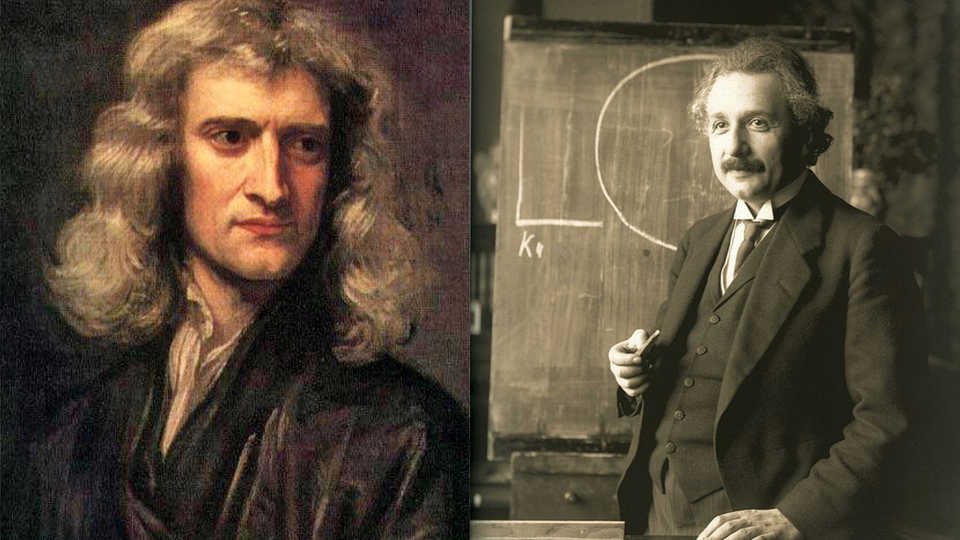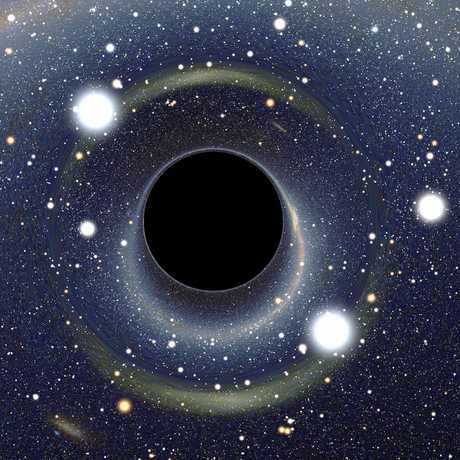So, like, what is gravity anyways?
You’ve probably heard conflicting things about gravity. In pop culture it’s treated as simultaneously trivially simple and unbelievably complex. We learn at a young age about Isaac Newton and his apple and all that. But the actual math we don’t usually touch until physics class.
We talk about the “force of gravity” all the time, but you might have also heard that “gravity is an illusion” or perhaps seen something in the news about gravitational waves.
What is gravity? Is it a force or is it something else?
Part of why I’m talking about this is because people often ask me these questions about gravity, but also it’s a good launching point to talk about how math and science work together to make predictions about the Universe at large.
Gravity is an observed phenomenon. Gravity is our term for the thing where objects with energy (mosty in the form of mass) move closer to one another over time. It’s not a force, and it’s a very real thing that we see, that people have been seeing forever.
So then what did Newton “discover”?
He had already discovered how to predict the motion of everyday objects by defining the forces upon them as the product of their mass and the observed acceleration—in physics terms, he had already described the relationship F = ma.
Newton then figured out that gravity can be modeled as a force that acts on every object relative to the mass other objects: that if you pretend the gravity is actually a force that pulls things together, then it explains the path of an apple falling from a tree or an arrow from a bow or why the Moon orbits the Earth.
In essence, what he discovered was that you can use math to predict the effects of gravity if you treat it like a force.
So then is gravity a force after all? Nope. It’s the observed phenomenon that energetic objects move towards one another. Most of its effects can be predicted by treating it as a force, but that doesn’t mean that it is a force.
So then why do physicists talk about “the force of gravity”?
The short answer is they’re lazy.
The long answer is that physics is the science of using math to explain matter and its motion through space and time. In that context, gravity is most often described as a force that pulls objects together. Since that’s how we use it in math, that’s how physicists speak about it.
For example, if you want to design a bridge, you have to balance a bunch of things like pressure, internal stress, wind shear, and gravity. You don’t really care about the concept of gravity, you care whether your bridge is going to fall down or not, and treating gravity as a force will answer that for you.
Then along came Einstein. Einstein invented a more accurate way to predict the effects of gravity. Newton’s model (treating gravity as a force) is really good at most things, but does not make correct predictions on really big scales or near very massive objects. Einstein’s tools, which he collectively called General Relativity, are better at predicting that stuff.
A simple way of describing General Relativity is that energy warps space (and time) in a way that causes otherwise-straight paths through spacetime to appear bent. The motion of objects traveling along those curved paths is what we see as gravity.
Is it more complicated? You betcha. Frankly, it’s the stuff of nightmares. But when it comes to making predictions, its efficacy is only surpassed by one other scientific theory—quantum field theory, which it fundamentally disagrees with. Oops!
Does that mean that Newton was wrong? No, not really. His simpler model is worse at predicting the relative motions of galaxies and planets, but that doesn’t mean it’s wrong. If Einstein’s is better at predicting stuff, does that mean that gravity really is the warping of space due to energy?
No, gravity is the observed phenomenon that objects with energy move towards one another. Remember?
We don’t “discover” the physics of the Universe, we build tools to help us predict it and, in this case, invent math that is quite accurate at predicting it. And that’s kinda how all of it works.
When we’re predicting the behavior of gasses, we often treat them as a collection idealized, pointlike particles without intermolecular attraction. They aren’t, actually, but the results work pretty well if you want to describe an inflating balloon or a steam engine. In Quantum Field Theory, we treat the Universe as overlaid quantum fields, with each particle represented as an excited state in its underlying field. Does that mean the Universe is overlapping quantum fields? Well, no. The Universe is the Universe, but it’s effective to model it that way.
It’s very helpful to imagine gravity as a force because it works. And that can help you solve all kinds of real world problems. You could build a bridge ignoring the force of gravity, but don’t be surprised when it falls down.






